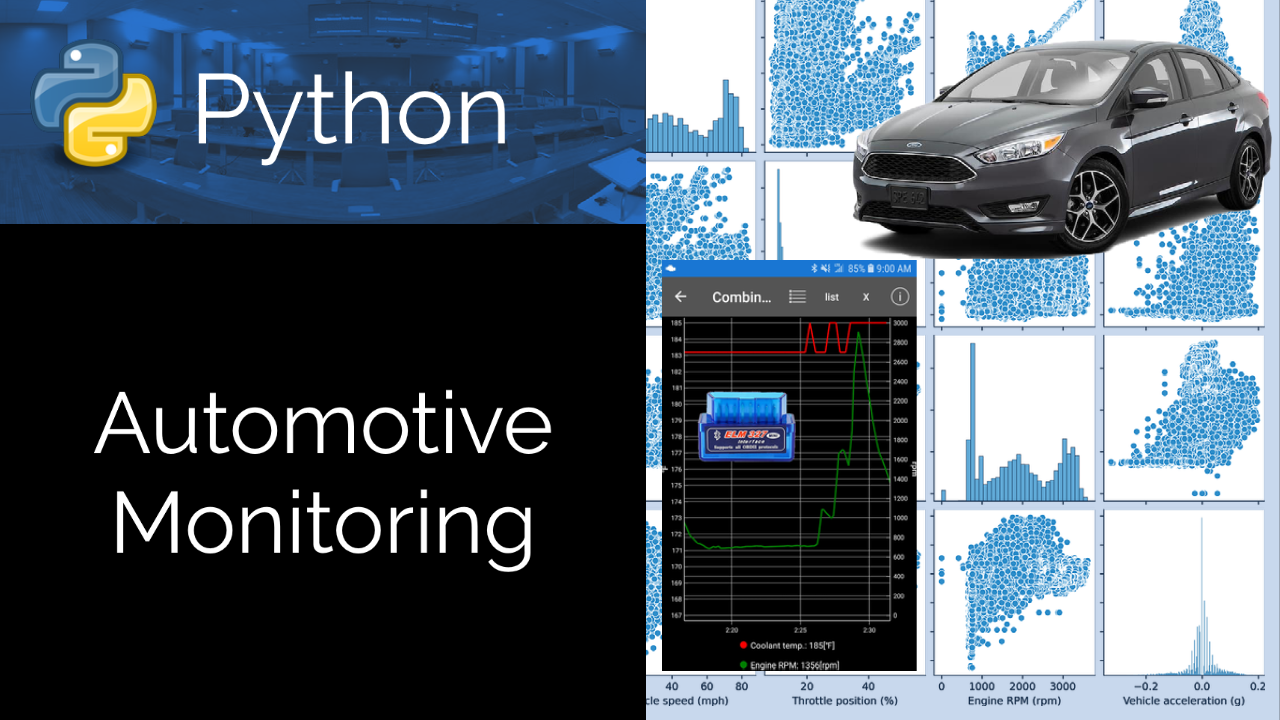Automotive Monitoring
Background: Automotive data is available from OBD-II codes that are standard for engine monitoring of light duty vehicles (passenger cars) starting in year 1996. Newer vehicles may include additional sensors from other electronic systems such as the brake system, tire pressure, climate control, and transmission. Data is processed with on-board computers to monitor the health of the vehicle systems and provide warning diagnostics when there is an indication of malfunction.

 Data: Data is collected from a 2014 Ford Focus (manual transmission) and a 2021 Chrysler Pacifica minivan with city and freeway driving:
Data: Data is collected from a 2014 Ford Focus (manual transmission) and a 2021 Chrysler Pacifica minivan with city and freeway driving:- Automotive Warmup (30 min), 62 columns, Ford
- Provo to St. George, Utah (~8 hrs), 40 columns, Ford
- Provo to Salt Lake City, Utah (~2 hrs), 22 columns, Ford
- Des Moines to Pella, Iowa (~1 hr), 46 columns, 2021 Chrysler
Data sets 1 and 2 are collected with the ELM327 module with raw sensor data and calculated values that are collected with Car Scanner (App) from the OBD-II codes through a Bluetooth connection. Data set 3 is collected with an OBDLink MX+ OBD-II module through a Bluetooth connection.
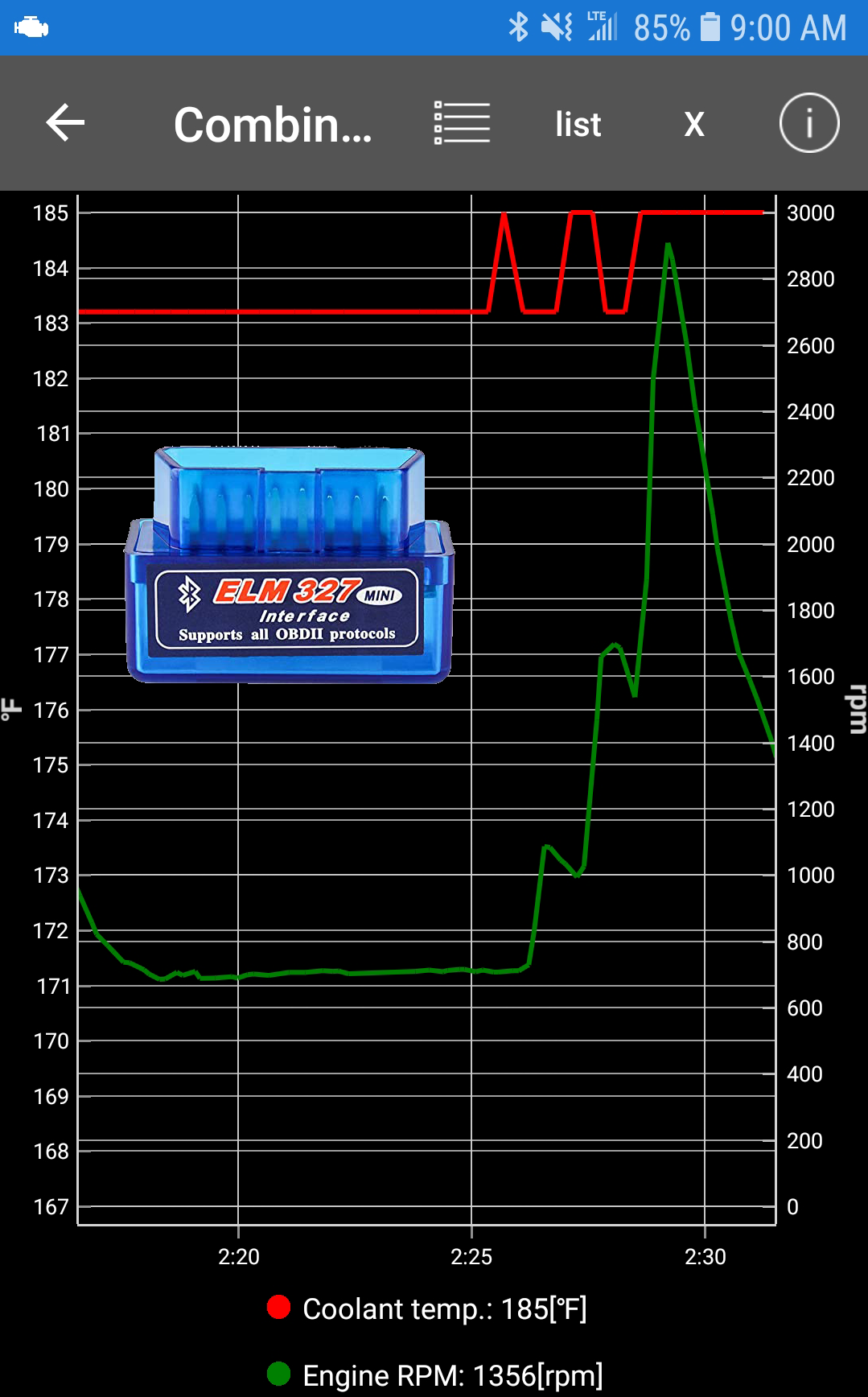
# warm-ups since codes cleared () A/C pressure (kPa) Absolute load value (%) Absolute pedal position D (%) Absolute pedal position E (%) Absolute throttle position B (%) Air:fuel ratio () Altitude (GPS) (feet) Ambient air temperature (℉) Average fuel consumption (MPG) Average fuel consumption (total) (MPG) Average fuel consumption 10 sec (MPG) Average speed (mph) Average speed (GPS) (mph) Barometric pressure (kPa) Calculated boost (bar) Calculated engine load value (%) Calculated instant fuel rate (gal./h) Catalyst temperature Bank 1 Sensor 1 (℉) Commanded evaporative purge (%) Commanded throttle actuator (%) Control module voltage (V) Distance traveled since codes cleared (miles) Distance traveled with MIL on (miles) Distance travelled (miles) Distance travelled (total) (miles) Engine coolant temperature (℉) Engine RPM (rpm) Ethanol fuel percent (%) Evap. system vapor pressure (Pa) Fuel economizer (based on fuel system status and throttle position) () Fuel level input (%) (%) Fuel level input (V) (gallon) Fuel rail press. (kPa) Fuel used (gallon) Fuel used (total) (gallon) Fuel used price ($) Fuel used price (total) ($) Fuel/Air commanded equivalence ratio () Instant engine power (based on fuel consumption) (hp) Intake air temperature (℉) Knock retard (°) Lambda () Learned octane () Long term fuel % trim - Bank 1 (%) MAF air flow rate (g/sec) OBD Module Voltage (V) Oxygen sensor 1 Wide Range Current (mA) (mA) Oxygen sensor 1 Wide Range Equivalence ratio () Oxygen sensor 2 Bank 1 Short term fuel trim (%) Oxygen sensor 2 Bank 1 Voltage (V) Power from MAF (hp) Relative throttle position (%) Short term fuel % trim - Bank 1 (%) Speed (GPS) (mph) Throttle position (%) Throttle Position Actually (°) Throttle Position Desired (°) Timing advance (°) Transmission Odometer (℉) Vane position sensor (V) Variable camshaft actual advance #1 (°) Vehicle acceleration (g) Vehicle speed (mph) Latitude Longitude

Objective: Investigate driver and automobile performance. Use an OBD-II reader and collect data from a vehicle. Analyze the following:
- Determine Light-off Time of the Catalytic Converter
- Visualize the Speed and Elevation on a Map
- Find maximum fuel economy versus speed
Example data is provided for each sample solution.
url = 'http://apmonitor.com/pds/uploads/Main/automotive.txt'
data = pd.read_csv(url)
Box Plot

Parity Plot
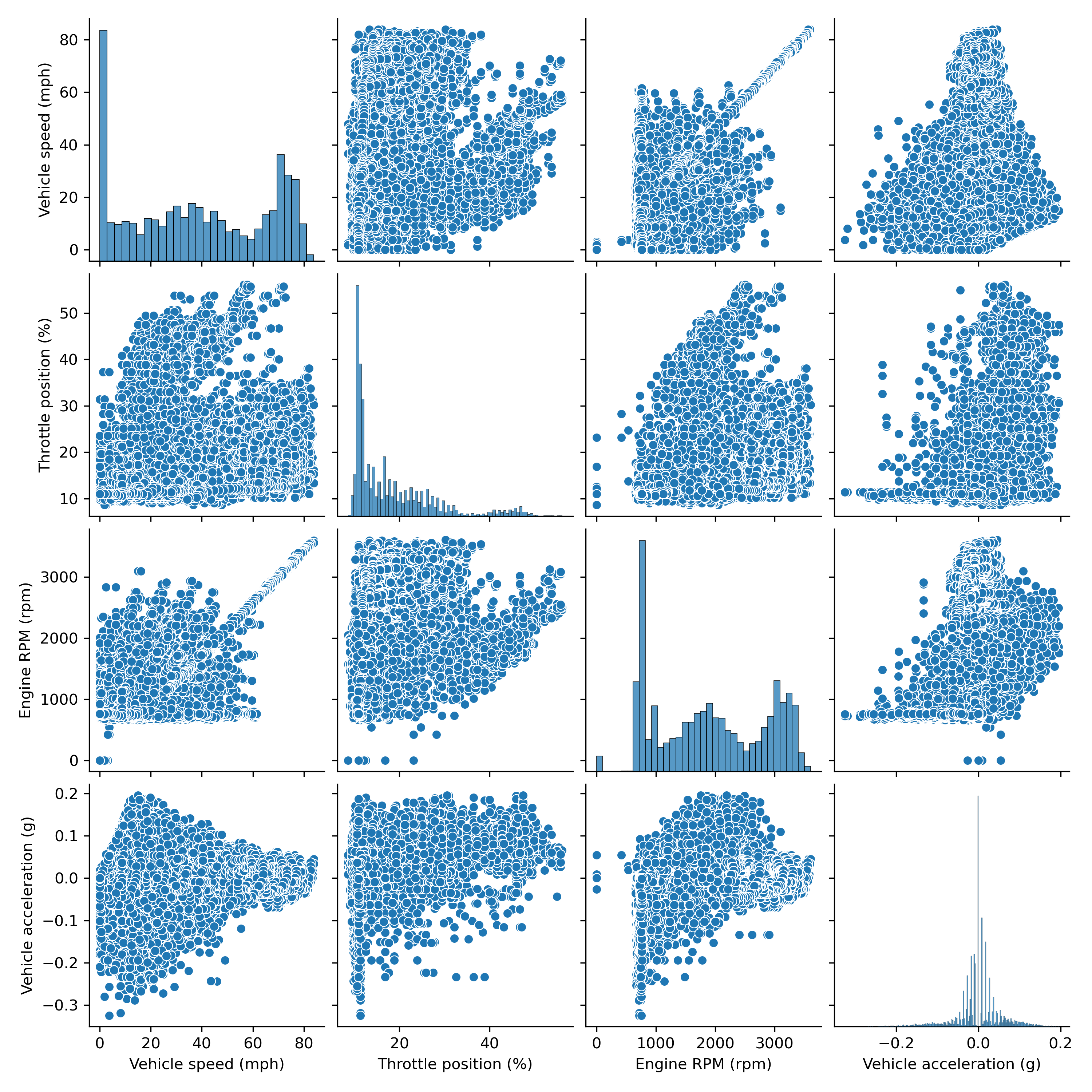
Case Study 1: Catalyst Light-Off
The catalyst light-off temperature is a minimum temperature to initiate the catalytic reaction. Before light-off temperature is reached, the catalytic converter is less effective at reducing the pollutants. A typical light-off temperature is between 400 to 600 degrees F. The normal operating temperature is between 750 to 1,600 degrees F. The operating temperature increases with more pollutants in the exhaust.
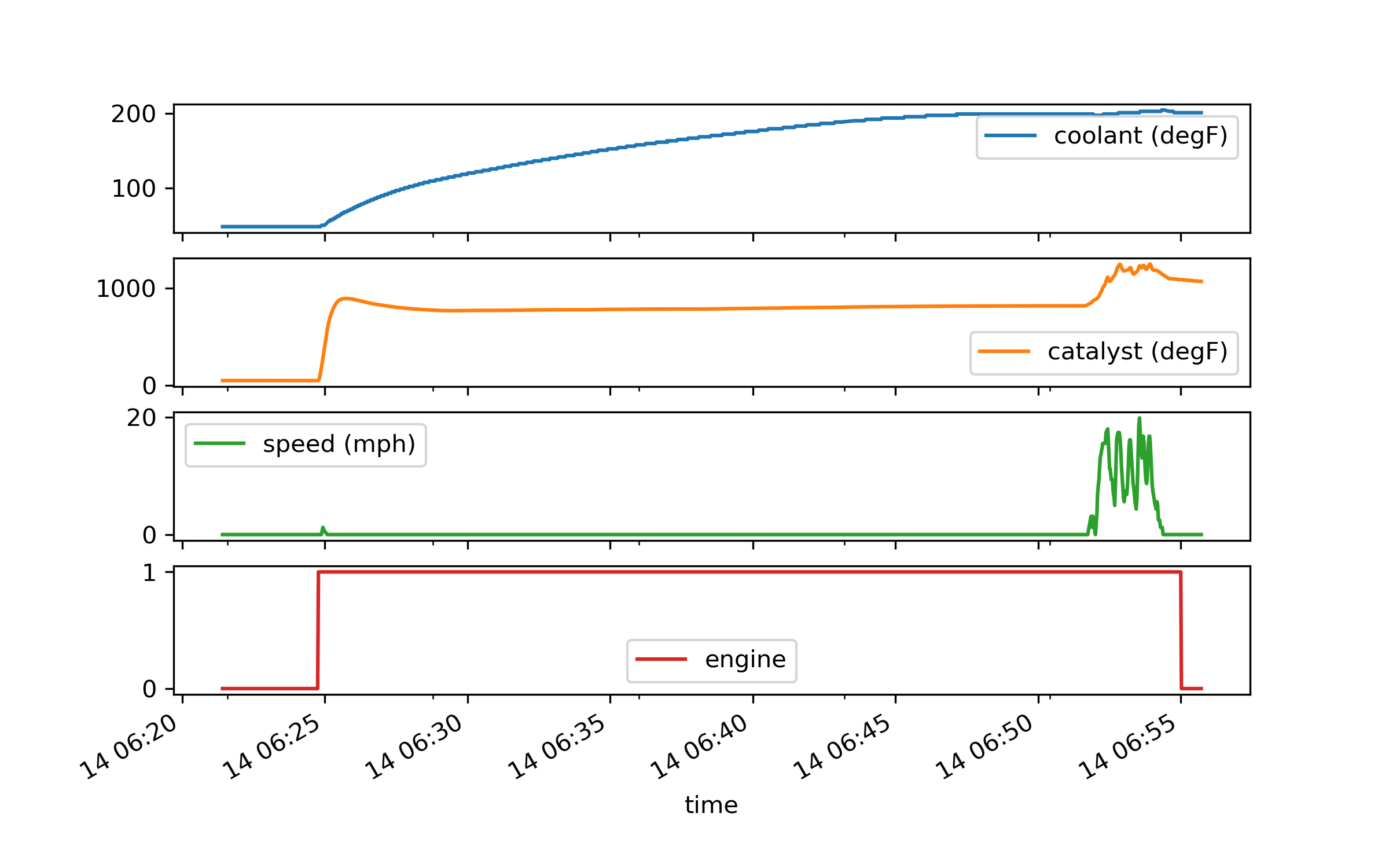
Calculate the time to catalyst light-off (500 degF) in seconds. Create an ARX model of the catalytic temperature and coolant temperature based on the vehicle speed and engine status.
Case Study 2: GIS Map Visualization
Geographic Information Systems (GIS) are used to create, manage, analyze, and map data. GPS is used to identify the location of the vehicle. Car data is merged with location data in a single data file.
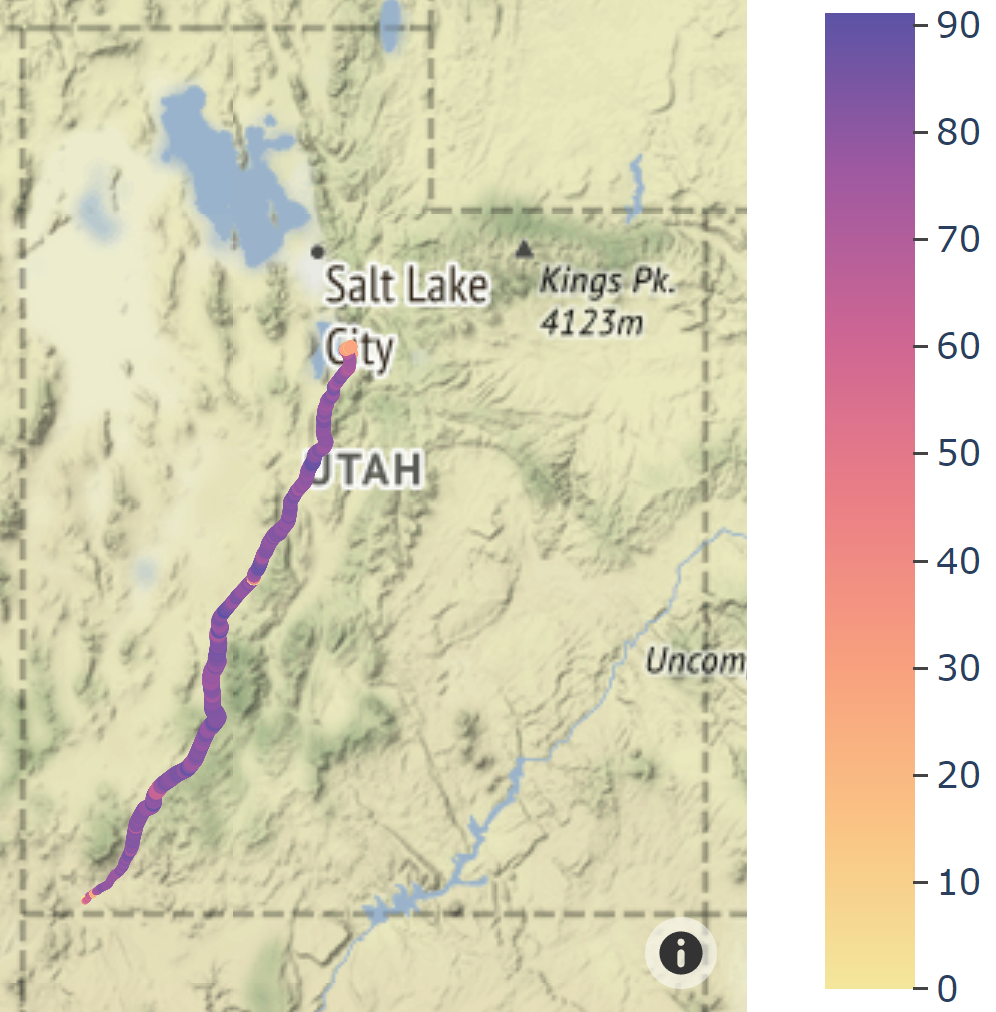
This exercise demonstrates mapping capabilities in Python with three options to create a map and display speed and elevation on the map.
Case Study 3: Fuel Efficiency Regression
Fuel efficiency is affected by many factors such as speed, elevation changes, and aggressive acceleration. Calculate the fuel efficiency in miles per gallon (MPG) or Liters per 100 km (L/100 km). Use regression to develop a model of how measured factors relate to the fuel efficiency.

